Related Research Articles

The School of the Museum of Fine Arts at Tufts University is the art school of Tufts University, a private research university in Boston, Massachusetts. It offers undergraduate and graduate degrees dedicated to the visual arts.
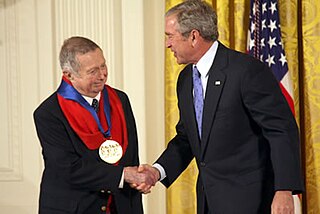
George Clair Tooker, Jr. was an American figurative painter. His works are associated with Magic realism, Social realism, Photorealism, and Surrealism. His subjects are depicted naturally as in a photograph, but the images use flat tones, an ambiguous perspective, and alarming juxtapositions to suggest an imagined or dreamed reality. He did not agree with the association of his work with Magic realism or Surrealism, as he said, "I am after painting reality impressed on the mind so hard that it returns as a dream, but I am not after painting dreams as such, or fantasy." In 1968, he was elected to the National Academy of Design and was a member of the American Academy of Arts and Letters. Tooker was one of nine recipients of the National Medal of Arts in 2007.
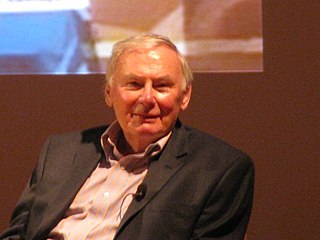
Richard Estes is an American artist, best known for his photorealist paintings. The paintings generally consist of reflective, clean, and inanimate city and geometric landscapes. He is regarded as one of the founders of the international photo-realist movement of the late 1960s, with such painters as John Baeder, Chuck Close, Robert Cottingham, Audrey Flack, Ralph Goings, and Duane Hanson. Author Graham Thompson writes "One demonstration of the way photography became assimilated into the art world is the success of photorealist painting in the late 1960s and early 1970s. It is also called super-realism or hyper-realism and painters like Richard Estes, Denis Peterson, Audrey Flack, and Chuck Close often worked from photographic stills to create paintings that appeared to be photographs."
William Ronald Smith, known professionally as William Ronald, was an important Canadian painter, best known as the founder of the influential Canadian abstract art group Painters Eleven in 1953 and for his abstract expressionist "central image" paintings. He was the older brother of painter John Meredith (1933–2000).

Everett Shinn was an American painter and member of the urban realist Ashcan School.
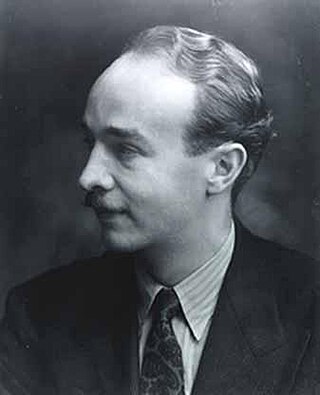
John Koch, was an American painter and teacher, and an important figure in 20th century Realism. He is best known for his light-filled paintings of urban interiors, often featuring classical allusions, many set in his own Manhattan apartment.
Robert Remsen Vickrey was a Massachusetts-based artist and author who specialized in the ancient medium of egg tempera. His paintings are surreal dreamlike visions of sunset shadows of bicycles, nuns in front of mural-painted brick walls, and children playing.
Idelle Lois Weber was an American artist most closely aligned with the Pop art and Photorealist movements.
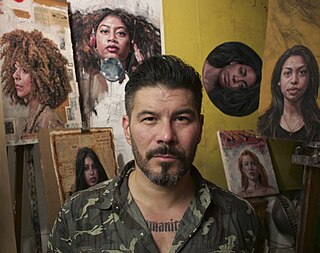
Tim Okamura is a Japanese Canadian artist known for his contemporary realist portraits that combine graffiti and realism. His work has been on the cover of Time Magazine and has been featured in several major motion pictures. Okamura's paintings are featured in major permanent collections around the world such as London's National Portrait Gallery and Washington DC's National Portrait Gallery. He was also one of several artists to be shortlisted in 2006 for a proposed portrait of Queen Elizabeth of England.
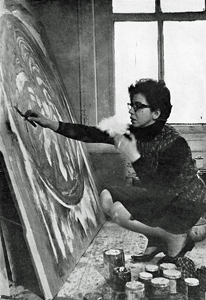
Sonia Gechtoff was an American abstract expressionist painter. Her primary medium was painting but she also created drawings and prints.

Itshak Jack Holtz was a Polish-born and an Israeli and American Orthodox Jewish painter, who is best known for his paintings and drawings that depict traditional scenes of Jewish life.

Howard Edwin Hack was an American representational painter and graphic artist, with works in numerous museum collections. Known for an innovative approach to a variety of media, as well as use of traditional oil paints, Hack began working in the late 1940s. He was active in the San Francisco Bay Area.

Sylvia Dwyer (1912–1985) was an expressionist painter, art critic, and the founder and director of the Brooklyn Arts Gallery, the first art gallery in Brooklyn, New York.
Andy Johnson was a Swedish-American painter. He started painting at age 64 in a coal bin by the light of a 75-watt bulb. He was discovered by Sylvia Dwyer while working as the custodian and superintendent of a local Brooklyn Heights building, and appeared in multiple exhibits in the Brooklyn Arts Gallery. As his career continued, his art and story became the subject of many international expatriate newspapers.
Sidney Gross was an American artist and painter. His early style was influenced by the Social realism. He also drew on the Surrealist Movement that was just beginning the year he was born. By the time he was twenty, he was painting distinctively urban surrealism, while producing critically admired portraits, something he continued to do during his lifetime.
Jacob Getlar Smith was an American painter and muralist who worked mostly in New York City. Smith studied at the National Academy of Design in New York from 1919 to 1921.
James Joseph DeMartis was an American painter of the post-World War II generation who explored a wide variety of styles and media; he is best known for his abstract expressionist works.
Sidney Goodman was an American figurative painter and draftsman from Philadelphia, PA who explored the human form. Goodman received public notice in the early 1960s for his oil paintings, leading to his inclusion in the 1973 Whitney Biennial. In 1996, the Philadelphia Museum of Art presented a retrospective show of Goodman's paintings and drawings.
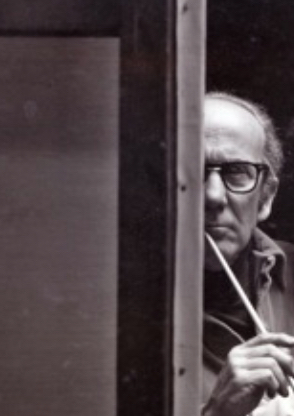
Albert John Pucci was an American multi-genre visual artist. His works have been honored with awards from the National Academy of Design and National Audubon Society and have been featured in exhibitions and galleries, including the National Academy and The Brooklyn Museum as well as private and corporate collections throughout the world. Primarily known as a painter and illustrator, his prolific output contains works of realism, illustration, book cover art, textile design and romantic cubism.
References
- ↑ ”Heights Art Gallery Opening Wednesday” (January 18, 1958). New York World-Telegram.
- ↑ Muir, Hugh O., March 27, 1964, Brooklyn World Telegram, Editorial
- ↑ Hughes, Cindy (March 20, 1964), Brooklyn World Telegram.
- ↑ Walton, Richard J. (January 22, 1958). "One Painting Leads to Birth of Gallery". Brooklyn New York World Telegram. Second Section, In the Heights.
- ↑ "Is Art a Profession or Violation? Either Way It Tangles Eviction". The New York Times . Retrieved 2015-06-25.
- ↑ Heimer, Mel (January 1961). “My New York” syndicated column.
- ↑ Knowles, Clayton (1959-06-03). "Is Art a Profession or Violation? Either Way It Tangles Eviction - Article - NYTimes.com". The New York Times . Retrieved 2015-06-25.
- ↑ February 26, 1962, "The New York Times".
- ↑ "August Satre". Askart.com. Retrieved 2015-06-25.
- ↑ October 23, 1961. Journal American.
- ↑ October 27, 1961. New York World Telegram.